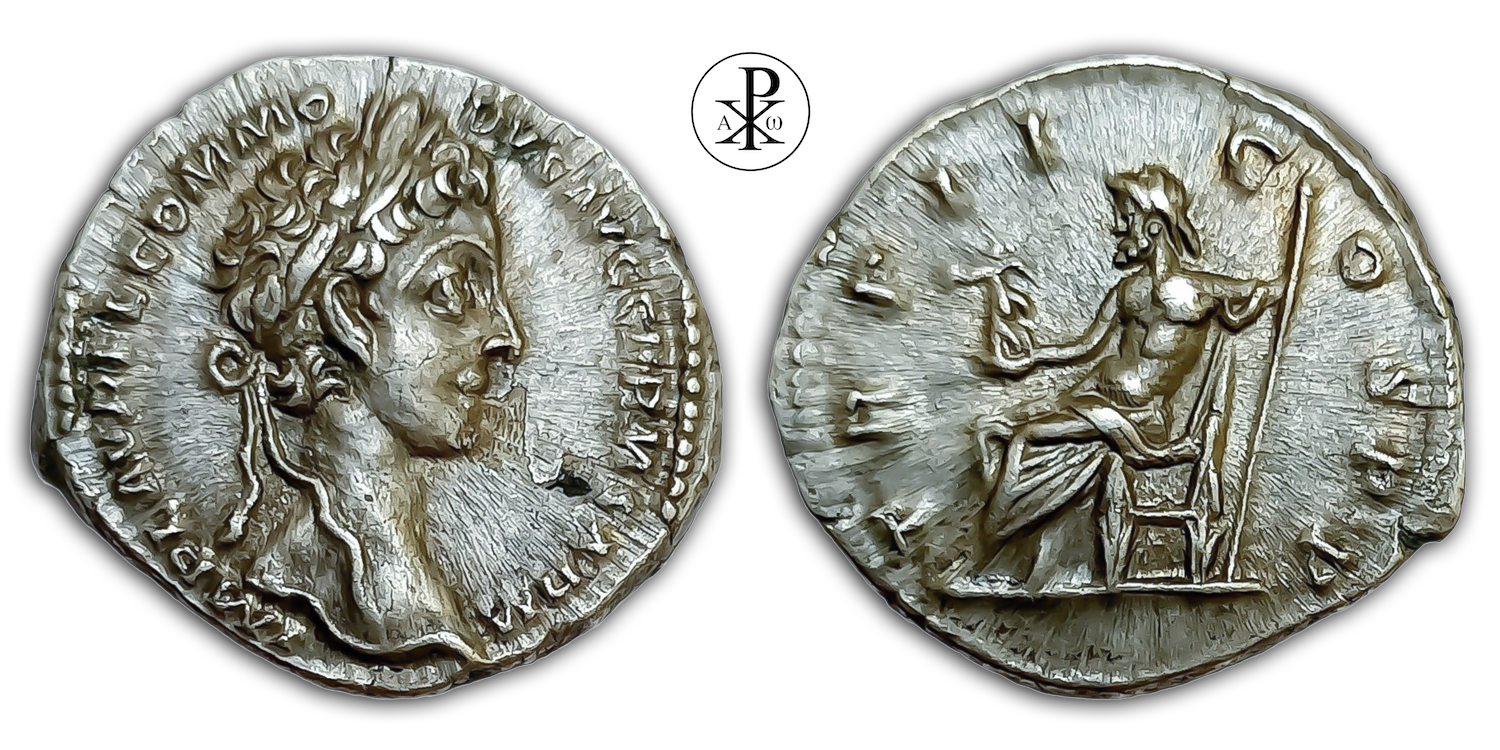Imperator Caesar Lucius Aelius Aurelius Commodus Augustus
Reign: Marcus Aurelius
Mint: Rome
Date: 177 AD
Nominal: Denarius
Material: Silver
Diameter: 18mm
Weight: 3.40g
Reference: RIC III Marcus Aurelius 637
OCRE Online: http://numismatics.org/ocre/id/ric.3.m_aur.637
Rare: R3
Provenance: Owl & Wolf Moedas Antiguidade Clássica Lisboa, Portugal (Catawiki, Lot 69040863)
Pedigree: –
Special: Extremely rare Bust type with only laureate
Obverse: Head of Commodus, laureate, right
Inscription: IMP L AVREL COMMODVS AVG GERM SARM
Translation: Imperator Lucius Aurelius Commodus Augustus, Germanicus, Sarmaticus
Translation: Imperator, Lucius Aurelius Commodus, Augustus, conqueror of the Germans, conqueror of the Sarmatians
Reverse: Jupiter, naked to waist, seated on low seat, holding Victory on extended right hand and vertical sceptre in left hand
Inscription: TR P II COS P P
Translation: Tribunicia Potestate Secunda, Consul, Pater Patriae
Translation: Holder of tribunician power for the second time, consul, father of the nation
Comment: Jupiter (Latin Iuppiter) is the name of the supreme deity of the Roman religion. An older form of the name is Diēspiter. He was often called Iuppiter Optimus Maximus (“best and greatest Jupiter”), usually abbreviated to IOM in inscriptions. He wears a beard, his upper body is naked and a cloak is draped around his hips. Jupiter holds the thunderbolt, a bundle of lightning or the sceptre. He is depicted both standing and sitting. Jupiter is often accompanied by Victoria or an eagle. Jupiter corresponds to Zeus, the Greek “father of the heavens”. Like many other ancient gods, Jupiter was worshipped with various epithets, each of which emphasised certain aspects or was associated with individual localities or appropriated local gods. As Jupiter Latiaris, he was worshipped by the Latins as the patron deity of their city federation, which was dominated by Rome only later, and his temple was therefore located outside Rome in the Alban Hills. As state god he was Jupiter Optimus Maximus, as supreme god in the Capitoline Triad worshipped in the temple on the Capitol he was Jupiter Capitolinus. Other epithets go back to ancient cults, such as Iupiter Feretrius (“the noble loot bearer”) or Iupiter Stator (“who makes the enemies stop”). Others only gained importance in the imperial period, such as the cult of Jupiter Tonans (“the thunderer”), which is actually a transposition of the Greek Zeus Bronton. As Jupiter Pluvius (“the raining one”) he was invoked to end summer droughts.
After the victorious Second Marcomannic War, Commodus travelled with his father to Syria and Egypt in 175-176 AD, and then returned triumphantly to Rome in the autumn of that year. Soon after returning to Rome, probably on the same day that Marcus triumphed (23 December; de Germanis and de Sarmatis), Commodus was elevated to emperor and co-ruler by his father. About a month later Commodus also triumphed, and his father is said to have walked beside the triumphal chariot (Marc. 16, 2). On 1 January 177 AD Commodus assumed the consulship for the first time, with M. Plautius Quintillus. In the course of this year Commodus received the title Augustus and Pater Patriae and thus now officially became co-emperor with equal rights with his father. Accordingly, on coins he is now called L. Commodus Aug. cos. p. p. (Cohen 63. 66. 67) or L. Aurelius. Commodus Aug. cos. p. p. (Cohen 65. 68. 743) or Imp. L. Aurelius. Commodus Aug. Germ. Sarm. tr. p. II cos. p. p. (Cohen 79. 80. 83-90. 95. 96. 98-102. 744-748) or finally Imp. Caes. L. Aurelius. Commodus Aug. Germ. Sarm. tr. p. II cos. p. p. (Cohen 91; cf. CIL VI 1016 a = Dessau 375. CIL III 3968 = Dessau 390. CIL VI 1023; inaccurate CIL VIII 9992).
The type of denarius presented here is Commodus’ first issue as joint emperor with his father Marcus Aurelius. It is speculated that this type with Jupiter was issued to celebrate his elevation to Augustus. The iconography of the reverse is clear. Jupiter’s in his capacity as Roman state god with Victoria as the deified personification of victory, virgin guardian of the empire and above all the patron goddess of the Roman emperor – here in the person of the young co-emperor Commodus as a solemnly raised Augustus. This type exists in two rare versions, with RIC 636 (Bust of Commodus, laureate and draped) and RIC 637 (Head of Commodus, only laureate). The latter version is extremely rare – I know of only one example sold at auction in the last 20 years.
